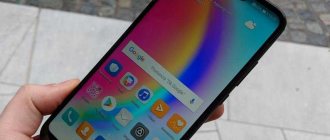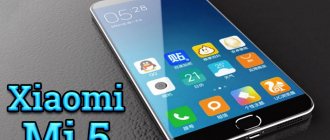Technical process
The technical process is no longer as important as it used to be.
The technical process for producing a modern chipset for an Android device is 16 nanometers or less. It's time to forget the hot 28 nm, leaving it in history. So no Snapdragon 430, MediaTek MT6750, MT6737 and other museum pieces. By 2020, they are outdated, as they are inferior in performance to their successors, and consume much more battery power.
With the transition to transistors with a vertical gate, the number (this happened just with the development of standards less than 20 nm) indicating the technical process no longer has an actual link to the size of the transistors and power consumption. If 5 years ago the transition from 28 to 45 nm also meant a reduction in power consumption, now the difference between 16, 14, 12, 10 and 8 or 7 nm is insignificant, and not always in favor of a thinner process.
There is no point in focusing too much on numbers. It is not at all a fact that a chipset produced according to 12 nm standards will be more economical than its 16 nm counterpart. The main thing is to look at reviews about a specific smartphone. It is also important to consider the quality of optimization of the Android OS in a particular device. Devices released as part of the Android One project, like the Mi A2, are well optimized.
Frequencies and cores
The newer the core architecture and the higher their frequencies, the faster the processor will work. But the downside is energy consumption. Just as a car engine consumes more fuel per minute, the higher its speed, so the chipset consumes more electricity per unit of time, as the number of gigahertz increases. But the opposite is also true: the higher the speed, the faster the car goes, the more cycles per second, the sooner the cores will cope with the task.
The dependence of frequency and consumption forces us to look for a middle ground. If the core speed is around 1.5 GHz or lower, they will run slowly, taxing the battery longer. Therefore, low-frequency SoCs are suitable only for those who do not load the device with anything heavier than web surfing and instant messengers.
As you approach the 3 GHz mark, power consumption increases rapidly, so above 2.5 GHz are only needed for games and other heavy tasks. But the best processors for an Android smartphone, which are suitable for the average user, should operate at a frequency of about 1.8-2.2 GHz. This is the golden mean.
As for architecture, the best option is processors containing “fast” Cortex A73, A75, A76 cores, as well as their modifications such as Kryo 260, 360, 460. They demonstrate the best performance per megahertz frequency. For example, in the GeekBench 4 test, the regular Cortex A53 core at 2 GHz scores about 800 points, the A73 – 1500, the A75 – 1700, and the A76 – more than 2000. The modified Cortex A76 Kryo 460 core in the Redmi Note 7 Pro gives over 2300 points.
Main characteristics
- First, you should understand that any microprocessor (CPU) consists of certain components. In particular, it contains many transistors. And the smaller these components are, the less energy the entire chipset as a whole will consume. Therefore, professionals who regularly review mobile equipment first look at the technical process by which the processor is manufactured. It is measured in nanometers. If we compare chipsets manufactured using the 12 and 30 nm process technology, then with the same clock speed and number of cores they will have completely different power consumption. That is, a smartphone with a second processor will require connecting a charger much more often (with absolutely the same other specifications and a completely identical operating system). The reduction in power consumption occurs due to the fact that smaller transistors produce less heat.
- Another important characteristic is the number of cores
. But don’t think that the eight-core chipset will necessarily be more powerful than its quad-core counterpart. Even our rating will confirm that this is not always the case. Qualcomm has flagship solutions in the past, consisting of four cores, characterized by an increased clock frequency (the third important characteristic). At that moment, competitors were offering eight-core chipsets, the clock speed of which was noticeably lower. However, in some usage scenarios, it is the eight-core solution that shows itself better - when running some simple application, only one core will work, which in a quad-core product will be larger and less energy efficient. However, in real life the difference is barely noticeable, and smartphones are increasingly working under load, processing a large amount of information even just in the background. - Be that as it may, the number of cores and their clock speed directly affect how quickly the operating system and all applications will work. Budget smartphones are equipped with a quad-core chipset, the frequency of which does not exceed 1.4 GHz. Expensive devices work faster, since they contain a processor with eight cores, half of which have a frequency of 2.2 GHz. Well, top mobile chipsets can be even more powerful.
Graphics subsystem
In terms of graphics subsystem, Qualcomm processors look best. Their Adreno GPU outperforms comparable standard ARM Mali solutions. Because of this, a conventional Snapdragon 660 with Adreno 512 will perform better in games than a Kirin 710 with a Mali G51 MP4, a Samsung Exynos 9610 with a Mali G72 MP3, or a Helio P60 with an identical video processor. The same Nokia 5.1 Plus in terms of performance is approximately on par with models on SD636.
However, it is worth considering that the graphics subsystem is important, first of all, for game lovers. In everyday tasks, the load on it is low, and even budget solutions, like the Adreno 506 or Mali G71 MP1, are capable of rendering images for display on the screen in programs. Because of this, for non-gamers it does not matter much which processor to get an Android smartphone with. In terms of CPU cores, single-tier Snapdragon, Exynos, Kirin and Helio chips demonstrate similar capabilities.
Chipset Specifications
Before we consider the rating of mobile processors, let's look at the important characteristics of the SoC that should be taken into account when choosing:
- Architecture. All chipsets for mobile devices are built on ARM (Acorn RISC Machine) and Intel (x86) architecture. For the user, there is no fundamental difference between them; the Android operating system works perfectly on any of the architectures, but ARM (the modern version of ARMv8) is most often found on the market. As for the computing cores of the Cortex series from ARM, today the latest and most powerful are Cortex-A77 and Cortex-A76; Cortex-A15 and Cortex-A7, which are capable of working in tandem or separately, also have good performance. Chipset manufacturers can also use their own cores in the design.
- Technical process. SoCs are built using different technical processes (transistor size, measured in nanometers), which determines the density of the components on the chip, and at the same time the speed and performance. The smaller the size, the more transistors are placed, and accordingly, the faster the processor works.
- Number of Cores. Modern CPUs have several cores, but there is no direct relationship between the processing speed of processes and their number. For example, Apple uses 6 cores, but the chipsets are not inferior in power and speed to 8-core copies from other manufacturers. One processor unit can contain 2 or 4 identical cores, which is done to increase the speed of operation by implementing parallel execution of processes. Thus, resource-intensive tasks can be performed in several processes at once. If the software is undemanding to resources and does not use multithreading, unused cores are disabled to save energy.
- Clock frequency. Processors operate at a clock frequency of 400 MHz, this point depends on the technical process and architecture of the processor unit. The higher this indicator, the more calculations can be performed per unit of time, which, in turn, affects the operation of the device in applications.
- Graphic accelerators. The GPU acts as a video card and affects gaming performance. So, the better the GPU, the higher the quality of graphics and textures will be; among other things, performance also depends on the accelerator.
The best processors for smartphones in 2019
Before we get into specific numbers, benchmark results, and rankings, let's take a quick look at the major mobile processor brands and the developers behind them.
- Snapdragon (Qualcomm, USA) is probably the most popular mobile processor. You can find them in devices of any price category. Budget smartphones are content with Snapdragon 2xx and 4xx. The 6xx and 7xx series are more intended for “average” people. The Snapdragon 8xx line is used by the most powerful flagship Android smartphones.
- MT/Helio (Mediatek, Taiwan) are very common, mostly budget processors. MT are designed for the simplest devices. Helio P is used in higher-level smartphones. There was also previously the Helio X line, which was considered the pinnacle of Mediatek processors. However, unable to withstand the competition with Snapdragon 8xx, it was abolished;
- A (Apple, USA) – mobile processors that serve as the “heart” of all iPhones, iPads, Apple TV set-top boxes and some other Apple devices. The latest models feature high graphics performance and also lead in single-core CPU performance tests;
- Exynos (Samsung, South Korea) – were previously represented by a fairly wide range, but are now known mainly for the flagships Samsung Galaxy S and Note. Moreover, Exynos is even used there only in versions of these devices for some countries. In the USA and China, for example, Galaxy S and Galaxy Note are equipped with Snapdragon processors instead of Exynos;
- Kirin (Huawei, China) – these processors are developed by the Chinese company HiSilicon, owned by Huawei. The most powerful of all the “Chinese”. The current Kirin 6xx and 7xx lines are designed for “average” smartphones. In turn, Kirin 9xx is the “heart” for flagship solutions. The most powerful Kirin 980 today found a place in the Mate 20, Mate 20 Pro, Honor View 20, as well as P30 and P30 Pro. Honor 20 is the most affordable device with this processor.
The five companies listed above are just the key and current suppliers of mobile SoCs today. Many developers, under the pressure of competition, were forced to practically leave the smartphone processor market.
This, for example, happened with the American Texas Instruments and Nvidia. Mobile SoC Tegra from Nvidia were very popular five years ago, but ultimately failed. Today Tegra has found application only in various specific systems and devices, and among the mass products we can only mention the Nintendo Switch console.
Various small Chinese manufacturers also have a small presence in the mobile processor market. Due to the extremely modest price of their products, they manage to hold their own against much larger competitors. Among these “Chinese” ones we can note Allwinner, Leadcore, Rockchip and Spreadtrum.
Their mobile processors are not included in the ratings below, since these solutions can only be found in the most budget-friendly devices.
Comparison of smartphone and tablet processors
You can more fully examine the performance of mobile device processors in a direct test on the devices. We will take ready-made statistics for comparing phone and tablet processors from the Geekbench test service.
As you can see from the table, the top processors for smartphones in single-core load mode are Exynos from Samsung. But the situation changes a little when the test is carried out for multi-core. In this smartphone processor performance chart, Snapdragon ranks first.
Apple processors score around 4200 for the A11 and 3900 for the A10X in single-core testing.
Although all processors are either built in the image and likeness of ARM cores or have their instructions, it is objectively impossible to determine which processor for a phone is better - Android or iOS. The quality of code optimization and the structure of the operating system itself does not allow us to accurately establish points of contact by which the two types of tests could be compared.
Review of the top best processor models for smartphones
| Category | Place | Name | Rating | Characteristic | Link |
| The best processors for mid-range smartphones | 1 | Qualcomm Snapdragon 730G | 9.8 / 10 | Copes with most mobile games | More details |
| 2 | Qualcomm Snapdragon 712 | 9.5 / 10 | Artificial intelligence improves shooting quality | More details | |
| 3 | HiSilicon Kirin 810 | 9.1 / 10 | Best artificial intelligence | More details | |
| 4 | HiSilicon Kirin 970 | 8.8 / 10 | Allows you to record video in the highest resolution | More details | |
| 5 | Mediatek Helio P90 | 8.5 / 10 | Can handle flagship devices and works with modern cameras | More details | |
| 6 | Qualcomm Snapdragon 710 | 8.2 / 10 | Perfectly tailored for Android | More details | |
| 7 | Qualcomm Snapdragon 665 | 7.9 / 10 | Low power consumption and fast data processing | More details | |
| The most powerful processors | 1 | Qualcomm Snapdragon 855 | 10 / 10 | Improved artificial intelligence and high performance | More details |
| 2 | Apple A13 Bionic | 9.7 / 10 | Can perform multiple tasks at once | More details | |
| 3 | Samsung Exynos 9820 | 9.4 / 10 | Fast learning function and twelve graphics cores | More details | |
| 4 | Apple A12 Bionic | 9.1 / 10 | Saves battery power | More details | |
| 5 | HiSilicon Kirin 980 | 8.9 / 10 | Distributes core resources | More details |
Which processor is better for a smartphone?
The most powerful chipset today is undoubtedly the Qualcomm Snapdragon 865, but the previous Snapdragon 855 and 855Plus will also be excellent current options in 2020 for an Android device. They are the ideal solution for modern games, demanding applications and high-quality movies.
The best-performing mobile processors are installed in flagship solutions; mid-level models will have more modest characteristics, but this does not mean that budget options will be unreliable and ineffective in operation.
When considering which SoC to choose a smartphone with, you shouldn’t forget that it’s not so much the phone processor itself that is important, but rather the optimization of the system, and it’s definitely not worth chasing after new products that replace each other very quickly. In addition, if it is important for you to purchase a productive and efficient device, you should also pay attention to RAM. In general, when choosing a device, it is better to be guided by your own requirements, depending on the need to perform specific tasks, because it often happens that the owner of a flagship does not use even half of the capabilities that the device can provide.
Mobile processor rating: AnTuTu performance test
The most popular benchmark (test) today for assessing the capabilities of processors in smartphones is AnTuTu. It is good because it evaluates not only the performance of the CPU cores, but also the power of the graphics accelerator built into the processor, which is important for games and a number of applications. In addition, AnTuTu evaluates RAM performance.
All this ultimately gives the final overall rating score and the higher it is, the better. The result may vary somewhat depending on the specific gadget (indicated in brackets) where the mobile processor is used. Therefore, for some processors in the list below, we have indicated several results at once. However, they are relatively close. Rating:
- Snapdragon 865 (Mi 10): 579110 – the most powerful mobile processor of 2020, installed in key flagships. A detailed list and description of smartphones can be found on AndroidLime.ru;
- Exynos 990 (S20 Ultra): 514485 – the “heart” for the current Samsung flagships in Europe and Russia (versions for the USA and China come with Snapdragon 865);
- Kirin 990 (P40 Pro): 496356 – the best processor of Chinese Huawei at the moment;
- Snapdragon 855 (Mi 9): 372006;
- Exynos 9820 (Galaxy S10): 330638;
- Kirin 980 (Huawei Mate 20 in performance ): 308307;
- Snapdragon 845 (Sony Xperia XZ3): 284555;
- Kirin 980 (Huawei Honor Magic 2): 274466;
- Kirin 980 (Huawei Mate 20 in standard mode): 273913;
- Snapdragon 845 (Asus ZenFone 5z): 266590;
- Snapdragon 845 (Xiaomi Pocophone F1): 265314;
- Exynos 9810 (Samsung Galaxy S9+): 246660;
- Kirin 810 (Nova 5): 237437;
- Snapdragon 730 (Mi 9T): 211915;
- Kirin 970 (Huawei P20 Pro): 209884;
- Snapdragon 835 (Nokia 8 Sirocco): 209577;
- Kirin 970 (Honor 10): 200440;
- Snapdragon 835 (LG V30): 182374;
- Exynos 8895 (Samsung Galaxy S8): 174435;
- Snapdragon 710 (Xiaomi Mi 8 SE): 170218;
- Snapdragon 660 (Samsung Galaxy A9 2018): 141011;
- Kirin 710 (Honor 8X): 137276;
- Kirin 710 (Huawei Mate 20 Lite): 136583;
- Snapdragon 660 (Xiaomi Mi A2): 130927;
- Exynos 7885 (Samsung Galaxy A7 2018): 123883;
- Helio P60 (Nokia 5.1 Plus): 119428;
- Snapdragon 636 (Nokia 7.1): 117175;
- Snapdragon 636 (Xiaomi Redmi Note 6 Pro): 115605;
- Snapdragon 630 (Sony Xperia XA2 Ultra) 89110;
- Kirin 659 (Huawei P20 Lite): 87431; (in other smartphones the chip shows noticeably lower results)
- Snapdragon 625 (Xiaomi Mi A2 Lite): 77964;
- Snapdragon 625 (Xiaomi Redmi S2): 77488;
- Mediatek Helio P22 (Xiaomi Redmi 6): 75182;
- Snapdragon 450 (Samsung Galaxy A6+ 2018): 69899;
- Exynos 7870 (Samsung Galaxy A6 2018): 63632;
- Mediatek Helio A22 (Xiaomi Redmi 6A): 61660;
- Mediatek MT6750S (LG Q7): 59.983;
- Snapdragon 430 (Nokia 6): 47495;
- Mediatek MT6737T (Sony Xperia L2): 45023;
- Snapdragon 425 (Redmi 4A): 36110;
- Mediatek MT6737 (Nokia 3): 28441;
- Snapdragon 212 (Nokia 2): 25210.
All figures were taken from tests conducted by Western publications GSMArena and PhoneArena.
We also note that from test to test, even the same processor in the same smartphone, depending on the situation, the available amount of RAM and the firmware version, can produce slightly different results. Therefore, the rating numbers should be considered as indicative and not absolute.
You should not attach any decisive significance to the figures above. Especially if you choose a device not for sophisticated games and “heavy” tasks related to video processing, etc. For ordinary tasks related to launching applications, surfing the Internet, etc., most likely you will not see a colossal difference in speed you'll see. Even if you decide to compare a very budget device with an expensive flagship.
One more clarification needs to be made for Apple processors. According to the creators of the AnTuTu benchmark, it is impossible to compare the results of processors running on Android smartphones directly with processors from the iPhone. All Apple smartphones run iOS, which is a different environment. That is, it is correct to compare the results for Apple SoC in AnTuTu only with each other:
- Apple A12 (iPhone XS Max): 353210;
- Apple A12 (iPhone XR): 346735;
- Apple A12 (iPhone XS): 346379;
- Apple A11 (iPhone 8): 237594;
- Apple A11 (iPhone X): 233100;
- Apple A10 (iPhone 7 Plus): 179811.
iPhones are assembled and manufactured in India and Asian countries from, as a rule, components from Asian suppliers. However, the development of our own powerful mobile SoCs, albeit produced by TSMC, is the pride and real highlight of Apple devices
What types of mobile processors are there?
By number of cores and processor frequency
The core is the main computing unit of the processor. It is the core that determines performance and clock speed. Manufacturers of mobile system-on-chips can produce their own cores or borrow them from other developers. Depending on the application of the embedded system, the number of cores can be from 1 to 8. Although systems with 16 cores are not uncommon. The frequencies, despite the fact that these are mobile systems, are quite catching up with their older brothers. And the processor frequency in a smartphone affects the same thing as in a regular computer - performance. Frequencies can reach 3 GHz. However, it is worth remembering that this is a slightly different architecture and set of instructions, and they will perform operations in a different number of clock cycles. Also, frequency values usually do not apply to the entire system-on-chip. Usually 4 + 4 or 2 + 2 clusters are formed: a high-performance cluster with 4 or 2 cores and the same, but energy efficient. For heavy tasks and games, cores with higher frequencies are used, and for undemanding and background processes, weaker and more economical ones are used. Based on this, you can determine which processor frequency is best for each specific smartphone.
By architecture and technological process
The tone in the architecture of mobile processors has long been set by ARM - Advanced RISC Machines. It does not produce or sell its own processors. She develops concepts and structures for how components should be laid out on cores. That is, it forms an architecture, which it then sells under license to other companies, which, in turn, create systems on a chip based on them. In fact, all commercially available processors today have ARM architecture in one way or another or use their instruction set.
This is what the ARM Cortex-A57 core structure looks like. As for the term “technological process,” it now refers to the resolution of the equipment. In other words, this is the ability to place elements at the closest possible distances between them. The smaller the process technology, the greater the number of electronic components that can be placed on a chip. And this leads to an increase in productivity with the same area. The technology has made huge strides in the past few years. If in 2000 the 130 nm technology was in use, then the latest one in use today is 10 nm. This is a big leap forward. Besides, 10 nm is not the limit. In 2020, several companies announced the start of development of 7 nm processors. Their mass production will most likely be implemented in 2020.
By video processor
Since a system on a chip is practically a miniature computer, it is natural that a graphics processor is located on it. It performs the same function as the graphics card in a PC: displaying images on the screen. To a large extent, all GPU performance is required in mobile games. In addition to processor cores, ARM also develops and licenses Mali graphics subsystems. Many companies often use them in their SoCs. For example, Samsung and HiSilicon. Qualcomm usually uses Adreno GPUs. Apple uses either its own GPUs or PowerVR.
Mobile processor rating: GeekBench performance test
Unlike AnTuTu shown above, GeekBench is not a comprehensive test. It only evaluates the central processing unit of the mobile SoC. However, this is a key component, in addition, GeekBench tests performance both on a single core and on all together, which AnTuTu does not do.
Such testing is important because all applications/games are optimized differently and for some of them the presence of one powerful core is more important than a successful combination of several “average” cores. This time, for clarity, we will show the result in the form of percentages, where the leader of the rating scores 100%. And for the remaining processors, a performance value is indicated that they can “take” from the leader.
The winner in the smartphone CPU test today is Apple's A12. This mobile SoC has six rather than eight cores, which does not prevent it from leading the rating. By the way, we will explain how this is possible further in the text. For now, let's start with maximum performance in single-core mode.
Of the competitors in this subtest, Samsung managed to get closest to Apple with their Exynos 9810, which is the “heart” of the Galaxy S9.
It is worth noting that the tests still do not include the officially announced, but not yet available in any device, Exynos 9820 (chip for the Galaxy S10) and Snapdragon 855 (main processor for Android flagships for the entire 2020) platforms. It is likely that if they do not remove the leader, they will at least get very close to him.
If we talk about the general results of GeekBench, then, we repeat, we should not take them too literally.
- Firstly, although the benchmark tries to imitate real tasks, it is far from certain that it succeeds;
- Secondly, “real tasks” still mean something more often related to photo, video processing, archiving, encryption, and so on.
In turn, opening applications and the responsiveness of their interface should not differ very significantly (as one might mistakenly assume from the figures above) in speed on the iPhone compared to even very budget Android devices.
Some manufacturers, however, claim that their latest platforms still have a small impact even on the speed of application launch. In the slide above, Huawei compares its new Kirin 980 with the Snapdragon 845
What is the clock frequency (TC) of the processor
Most ordinary buyers rarely pay attention to this indicator, located next to the name of the processor and containing four or two digits. And those who are equipped with basic knowledge often take according to the principle, the more, the better. However, not everything is so simple and high frequency is not always a winning solution. Before choosing a specific product, you need to know what this processor is capable of for the selected phone model. Because it happens that the same frequency, but from different manufacturers, shows different results. The exception is processors with frequencies below 1 GHz; they should not deserve attention at all, even if they are mobile devices from Samsung or Nokia.
To find out whether the processor is suitable for the user’s preferences, just look at the results in AnTuTu Benchmark; tests of almost all known CPUs are presented on the Internet, so this will not be difficult. For comparison, you can even see what results were obtained from flagship representatives, which is also a very convenient solution. This will allow you to be vigilant during the purchase and not overpay when it is inappropriate.
Snapdragon 665
Snapdragon 665 is a representative of the mid-segment, which appeared on the market quietly and without any announcements. The chipset debuted in the Xiaomi Mi CC9e and Mi A3 smartphones and became the ideological successor to the Snapdragon 660, the same processor installed in the popular Redmi Note 7. There were no fundamental changes in it, just the main parts were improved. So, for example, now each of the 8 cores in the chipset is able to overcome the frequency limit of 2 GHz, which determines the speed of the mobile processor.
The type of technological process has also changed - from 14 to 11 nanometers. According to experts, the value greatly affects the energy efficiency and heating of the chipset. In practice this has been confirmed. In addition, the chipset received an improved Adreno 640 graphics unit, a new DSP signal processor and Spectra 165, which is responsible for image processing. Among the shortcomings of the Snapdragon 665, we can only highlight the downgrade of fast charging from Quick Charge 4 to Quick Charge 3.
Kirin 810
Huawei's proprietary creation, the Kirin 810, took ninth place in the ranking of smartphone processors. It appeared on the market in the summer of 2020. The chipset is manufactured using a 7-nanometer process technology with two Cortex-A76 cores capable of accelerating to 2.27 GHz, which are responsible for resource-intensive tasks. They are complemented by six Cortex-A55 with a clock frequency of up to 1.88 GHz. They come into play when solving day-to-day processes.
The chipset was used in the Huawei Nova 5 and Huawei 9X Pro smartphones, showing excellent energy efficiency and performance coupled with low heating. Interestingly, the processor supports dual-band Wi-Fi, Bluetooth 5, NFS and LTE-modem with download speeds of up to 1.4 GB/second. The downside is that there is no shooting in 4K resolution.
Kirin 970
Kirin 970 is another Huawei processor. It consists of 4 Cortex-A73 cores with a frequency of 2.36 GHz and the same number of Cortex-A53 with a frequency of 1.84 GHz. A similar set was used in the Kirin 960. The key improvement over the latter is the improved LTE module, which now allows for a maximum download speed of 1200 Mbit/s.
There have also been changes in the graphics department. The ARM Mali-G72MP12 is now in charge, with architectural improvements resulting in improved gaming performance. The chipset was also one of the first to feature the NSU neuromorphic processor. With its help, machine learning of the smartphone is implemented.
Meida Tek
In the domestic market it is impossible to find a top-end smartphone with a Media Tek processor model. However, purchasing a quality phone for $400 with this model is quite possible. For example, the Chinese phone Helio X20 belongs to the flagship category and runs on Media Tech.
In inexpensive models, there are much more problems with Media Tek products. However, the main problem is not the processor itself, but incorrect optimization for a specific smartphone model. These are already shortcomings of the company that produces phones. For example, a fairly old generation of Meizu phones (which at one time became a breakthrough for Chinese devices on the international market) works perfectly on the Media Tek processor model.
Last year the company decided to rebrand, releasing a number of good chips. At the moment, the company has entered into contracts with Xiaomi, and plans to push Snapdragon out of the market.
When choosing a phone with a Media Tech processor, you should compare smartphone processors specifically by phone brand. It is recommended to opt for products from Sony or Meizu, in which optimization is close to maximum.
Manufacturing companies
Most processors for smartphones are produced by such large companies as:
- Qualcomm is an American company founded in 1985 and holds a leading position in sales.
- Samsung Exynos – This CPU is used, as a rule, in branded phones from the same company.
- MediaTek is a Chinese company that is in demand for budget models, and since the advent of the Dimensity line - for flagship representatives.
- Intel Atom. The products of this company are more often used in inexpensive models.
- NVIDIA Tegra. The processors are used in Microsoft KIN.
- Apple Ax. High-quality processors that are used only in Apple products. They show high results in many tests and have good performance, which is noted by most buyers.
Exynos
The Exinos model is installed in many Samsung devices. However, an interesting fact is that the developers decided to use Qualcomm chips in their main flagships Samsung S8 and S9. However, one of the best (by all indicators) phones, Meizu Pro 6 Plus, has an Exynos device.
Exynos is best purchased in mid-range phones from Samsung. They are well optimized and work great. At the moment, the Korean manufacturer is completely losing the fight for the market to devices from China. Developers have to be content with a small amount of RAM and save on materials in order to somehow withstand the competition.
CPU Importance
Processors are the main element of a smartphone, laptop, desktop computer, tablet, e-reader, audio player, etc. It simultaneously serves as the heart and brain of any device. Thanks to it, the correct operation of the system is monitored.
The difference between telephone processors and computer processors is that the first option uses a CPU based on ARM architecture, since it is more energy efficient. Thanks to this, smartphones do not run out of charge after 3-4 hours of active use, and sometimes achieve long-term battery life. Therefore, looking at capacity is not always the right decision.
Qualcomm Snapdragon
The Snapdragon processor type is rightfully considered the best on the market. This directly affects the mass of its use. Almost all phones from the middle segment use different variations of this particular model.
When it comes to performance comparison, they have no equal at all. All modern flagships are equipped with Snapdragon. A striking example is the standard Android phone - Google Pixel 2, which has a Snapdragon 945 processor. In addition to Pixel 2, chips are also found in other top models of 2020.
Unfortunately, they are not so strong in budget phones. Many users believe that analogues from MTK or Kirin are much stronger.
Comparison of laptop processors
We have selected 3 interesting processors, which we will compare in different tasks. Not only top models are involved here, but also simpler and budget-friendly ones for work and the Internet.
Table of characteristics of the best processors. It's worth going over basic performance first. Next, you can look at the results of synthetic tests.
Passmark test Geekbench 4 test. As you can see, the i7 representative remains in the lead. Next behind it, almost neck and neck, are i5 and Ryzen 5. At the end are more budget solutions. But such a comparison will not give us the full picture. Therefore, we will also compare their integrated graphics.
This is what the built-in graphics solutions for our processors look like. Suddenly, the graphics of the fifth Ryzen are significantly ahead. That is, given the processor’s own performance, its graphics subsystem provides good overall performance out of the box and without adding discrete cards.
Well, now it remains to look at the lowest prices for laptops in which these processors are installed. The i7-8750H processor can be found in the Asus ROG GL503GE laptop for 92,000 rubles. True, with all the available characteristics, it also has discrete graphics GeForce GTX 1050 Ti on board. The i5-8250U processor is built into a laptop for 36,000 rubles - Lenovo IdeaPad 330-15IKBR. Here we get a more complete picture of the price, since discrete graphics are missing. The most inexpensive option with i3-8130U is installed in the Acer Aspire 3 for 25,500 rubles. The only graphics here are built-in. And there are no special frills in the laptop, so the system is the cleanest for comparison. Ryzen 5 is found in the laptop model from HP - 15-db0344ur. There is only one graphics core here. But 8 GB of RAM is installed and Windows 10 is preinstalled. The laptop costs 35,000 rubles. Ryzen 3 can be found in the Acer Aspire 3 in the A315-41G-R4FD modification. This laptop costs 26,500 rubles. The cheapest option with E2 9000 is in the HP 15-rb017ur model. You can buy a laptop for 17,000 rubles. Thus, it turns out that the best option that will suit most users is with Ryzen 5. It does not require a discrete card with powerful graphics and will solve most of both ordinary work tasks and problems with more or less modern games. The remaining options can be considered extreme. The solution with Intel i7 is suitable for gamers, and with AMD E2 - for simple work on the computer and the Internet.
Samsung Exynos 9820
New flagships from the South Korean corporation are produced on the Exynos 9810 chip. They are manufactured with 2 powerful cores of 2 GHz, 4 productive ones and a couple of weak ones.
Together with the Mali-G76 MP12 video accelerator, such chips can handle any 3D game. The energy efficiency of the crystal has been doubled compared to the previous generation, and performance has been improved by 25%; The video chip is 40% faster and almost a third more economical. Thanks to the chipset, phones with such a SoC support 4K display resolution (in practice, this will not be necessary for the next few years), video recording in 8K resolution, but do not support mobile networks of the latest 5G standard.
HiSilicon Kirin 980
The first SoC released on the 7nm process technology, which presented:
- Cortex-A76;
- dual microprocessor for working with neural networks and machine learning;
- Mali-G76 video accelerator, which processes videos and games at a frame rate of 60 frames per second;
- LTE Cat.21 modem with 1.4 GHz bandwidth.
The transistor density has been increased by 60%, which has a positive effect on the energy efficiency and power of the chip (+20%).
Apple Bionic A12
The first in the ranking of mobile processors for smartphones in 2020 is the improved A11. A12 consists of 6 cores. The NPU handles graphics. 4 weak crystals are half as economical as those used in the Bionic A11, and the top crystals are 15% faster. The Apple graphics system is based on a 4-core architecture and is capable of fully replacing a computer in the field of video and graphic editing, games and 3D editors.
The neural processor includes 8 chips, outperforming the A11 by almost an order of magnitude, while increasing efficiency by a quarter.
It unlocks never-before-seen machine learning, camera and 3D entertainment capabilities with 5 trillion operations per second. The NPU is able to predict user actions based on previous experience.
Top
It's time to show the top processors for smartphones in three price segments.
Flagships
An expensive phone is an image item that should become a full-fledged laptop computer, gaming tablet, or camera.
Apple A13 Bionic
7nm chipset with 6 cores: a pair of high-performance and 4 energy-efficient, game lovers will be pleased with 4 graphics cores. Devices equipped with it consume 40% less electrical energy, primarily by turning off the power to currently passive components.
The A13 Bionic includes about 8.5 billion transistors, and the neural unit is represented by an 8-core processor. The performance of the latter is 1 teraflops.
Qualcomm Snapdragon 865
Snapdragon received only minor updates, which did not affect overall performance and efficiency. The same 4 economical, 3 productive processors and 1 powerful core are used. Perhaps a version of the chip with increased frequencies will see the light of day.
The main innovation is the work with LPDDR5 memory operating at 2750 MHz with increased bandwidth. The neural unit has learned to function with single cameras, the resolution of which reaches 200 MP, and double cameras with a separation capacity of up to 25 MP. The chipset records 8K video and super slow motion videos at 960 frames per second. The built-in modem supports download speeds up to 2500 MB/s.
Kirin 990 and 990 5G
One of the first flagship SoCs to support 5G, built using EUV technology on an advanced 7nm process technology. Consists of more than 10.2 billion transistors, which is more than the A13. When used in high-speed 5G networks, it consumes 44% less electricity. In resource-intensive tasks, it shows a performance increase of about 30%.
Dual neuromorphic coprocessors accelerate the machine learning required for filming. The additional NPU core handles simpler calculations, such as face recognition. At the same time, it consumes 34 times less electricity than the main core.
Kirin 990 does not support 5G, comes with a single NPU core, lower frequencies of powerful cores and is produced without EUV photolithography.
Samsung Exynos 9820
New flagships from the South Korean corporation are produced on the Exynos 9810 chip. They are manufactured with 2 powerful cores of 2 GHz, 4 productive ones and a couple of weak ones. Together with the Mali-G76 MP12 video accelerator, such chips can handle any 3D game. The energy efficiency of the crystal has been doubled compared to the previous generation, and performance has been improved by 25%; The video chip is 40% faster and almost a third more economical.
Thanks to the chipset, phones with such a SoC support 4K display resolution (in practice, this will not be necessary for the next few years), video recording in 8K resolution, but do not support mobile networks of the latest 5G standard.
Qualcomm Snapdragon 855
8-core chip created by Qualcomm together with Samsung. The platform is equipped with a module for working with 5G networks with a theoretical throughput of up to 5 Gbit/s (and 2 Gbit/s for LTE), Wi-Fi 6th generation with WPA3 encryption and Bluetooth 5th generation.
Produced using a 7nm process technology – the most advanced one used in mass production in 2020. The transition increased the frequency of all cores:
- top-end – 2.86 GHz – used when using artificial intelligence algorithms, recognition of photo scenes;
- 3 powerful – 2.4 GHz;
- 4 weak – 1.8 GHz.
Each of them is equipped with its own Level 3 cache, which speeds up performance.
HiSilicon Kirin 980
The first SoC released on the 7nm process technology, which presented:
- Cortex-A76;
- dual microprocessor for working with neural networks and machine learning;
- Mali-G76 video accelerator, which processes videos and games at a frame rate of 60 frames per second;
- LTE Cat.21 modem with 1.4 GHz bandwidth.
The transistor density has been increased by 60%, which has a positive effect on the energy efficiency and power of the chip (+20%).
Apple Bionic A12
The first in the ranking of mobile processors for smartphones in 2018 is the improved A11. A12 consists of 6 cores. The NPU handles graphics. 4 weak crystals are half as economical as those used in the Bionic A11, and the top crystals are 15% faster. The Apple graphics system is based on a 4-core architecture and is capable of fully replacing a computer in the field of video and graphic editing, games and 3D editors.
The neural processor includes 8 chips, outperforming the A11 by almost an order of magnitude, while increasing efficiency by a quarter.
It unlocks never-before-seen machine learning, camera and 3D entertainment capabilities with 5 trillion operations per second.
The NPU is able to predict user actions based on previous experience.
Middle price segment
The “average” models cannot boast of exorbitant performance and its reserves, but they are everyday assistants for millions of users. The rating of high-performance processors for smartphones includes the following chipsets.
Helio G90 and G90T
They occupy a transitional position between top-end and mid-range chipsets. They are produced on the basis of a 12nm process technology and consist of two clusters of 4 cores. The Mali-G76 graphics can handle any game on the platform at maximum settings. The difference between the G90 and G90T is in the frequencies. The productive cluster operates at a frequency of 2.05 GHz and 2 GHz, respectively, and the energy efficient cluster operates at 800 and 720 MHz.
Supports up to 10 GB of LPDDR4 RAM, dual cameras with module resolutions of up to 24 and 16 MP or single cameras (up to 64 MP). Work in two Wi-Fi networks with different bands simultaneously.
Kirin 810
SoC with a pair of clusters of productive and economical cores, which are 10% more productive than the Snapdragon 730. Mali-G52 MP6 graphics are 60% faster than the graphics chip in the Kirin 710. The single-chip system is manufactured using 7nm technology and is equipped with support for the Kirin Gaming+ gaming platform to optimize games. Works with 4 cameras. DaVinci's own neuromodule outperforms the performance of a similar processor in the Snapdragon 855.
Snapdragon 765
The chipset is represented by 1 powerful, 1 productive and 6 economical cores. Adreno 620 graphics are 1/5 faster than Snapdragon 730 and handle any game at maximum graphics settings. Support for 12 GB of RAM and QuickCharge 4+ fast charging has been introduced. Comes with built-in 5G module with theoretical throughput up to 3.7 Gb/s.
Mediatec Helio P70
The basis of the Helio P70 is a dual-cluster chip consisting of Cortex A53 and A73, operating at a frequency of 2 GHz. Energy efficiency from this solution did not suffer at all due to the optimized power distribution algorithm. The platform does not get into the first ranks for one reason - the rather weak Mali-G72 graphics accelerator, despite increasing the operating frequency to 900 MHz. The graphics card is more designed for multimedia lovers: it can detect photo scenes and improve their quality on the fly.
The crystal is compatible with 4G with speeds up to 300 Mbps and works with two SIM cards simultaneously.
HiSilicon Kirin 710
The cores of the single-chip system are divided into a pair of clusters:
- 4 × Cortex-A73 2.36 GHz;
- 4 × Cortex-A53 1.7 GHz.
Produced using a 12nm process. The platform is equipped with a Mali-G51 graphics accelerator, which supports GPU Turbo technology - a graphics processing acceleration system that increases efficiency by up to 60%. Dynamic changes in the supply voltage and operating frequency of the bus and SoC reduced power consumption by a third. The video chip recognizes people's faces.
Peripheral capabilities include compatibility with Wi-Fi ac, the latest LTE Cat.12 and Bluetooth version 4.2. The board has economical LPDDR4 RAM.
Qualcomm Snapdragon 636
The platform was presented in 2020, but over the next year and a half it gained popularity among consumers of mid-price smartphones. The team worked hard and achieved the desired result - to obtain an energy-efficient processor with high performance. The cluster consists of a pair of blocks: 4 Cortex A73 with a frequency of 1.8 GHz at peak and A53, which can only accelerate to 1.6 GHz. Afterwards the “big brothers” are activated.
Graphics are provided by Adreno 509, whose 128 execution units operate at 720 MHz. The device can handle most 3D games only at medium graphics settings, otherwise you won’t have to wait for the required fps.
Supports 4K video and 4G mobile networks.
Samsung Exynos 7885
At the time of its release in 2020, it was one of the most powerful among the flagships, but now it is a tough nut to crack in the mid-price segment, manufactured using 14nm technology. Compatible with the latest Wi-Fi standard, Bluetooth version 5 and 4G. The LTE module limits network speed to 600 Mbit/s and works with two SIM cards simultaneously.
The cluster formula is atypical for most analogues: a pair of Cortex-A73, responsible for performance, and six Cortex-A53, which deal with everyday tasks. The chip allows shooting in 4K, but is not stable in this mode. Full HD+ recording and playback do not raise any questions.
The Mali-G71 video chip copes with any task, except the most resource-intensive games, with the best picture.
Budget
Let's look at the best cheap processors for an Android smartphone, which is used as a means of communication and obtaining information from the Internet: calls, instant messengers, a browser, watching movies in HD, taking pictures of average quality. Back in 2014 they were the flagships.
Helio P25
Helio P25 is produced using a 16nm process technology and consists of clusters of 4 cores: 2.6 and 1.6 GHz. The latter process ultra-high-resolution video and are used in games, video editing and other resource-intensive tasks. Optimization of the production process has reduced energy consumption. The Mali-T880 MP2 video chip processes images in all games with average quality.
The platform transmits data to LTE networks and is compatible with LTE-A Cat. 6 and Wi-Fi ac. The SoC copes with shooting video in 4K resolution with a 24-megapixel camera at 60 frames, despite the low result in AnTuTu. LPDDR4X RAM is battery efficient.
HiSilicon Kirin 659
Like all modern mobile processors, it consists of 8 cores included in a single cluster. Half of the Cortex-A53 is factory overclocked and runs at 2.36 Hz, half at 1.7 GHz. The budget Mali-T830 graphics chip with a frequency of 900 MHz is characterized by excellent optimization - it runs all games at medium settings and HD resolution. WITH
Captures 1080p video at 60 frames per second.
Qualcomm Snapdragon 450
The first 14nm SoC designed for low-cost smartphones. Excellent optimization of the 8 × Cortex-A53 at a frequency of 1.8 GHz made it possible to achieve unsurpassed autonomy. The GPU Adreno 506 video card classifies the device as a non-gaming device, but it allows you to run virtual entertainment, but it will not give many of them pleasure from the picture.
More suitable for everyday phone and camera phone (up to 21 MP)) for undemanding users.
Supports only Full HD resolution, does not heat up under any load.
Huawei KIRIN 980
- Year of issue: 2018
- Process technology: 7 nm
- Architecture : 2*Cortex-A76 + 2*Cortex A76 + 4*Cortex A55
- Video accelerator: Mali-G76 MP10
Geekbench result: 3390/10318 points
The new processor from Huawei was technically the first created using the 7 nm process technology, however, having presented it to the world, the company was late with the release, giving the laurels to Apple. The cores are divided into three groups - two high-performance, two energy-efficient and four medium-performance. To ensure that exactly the cores needed are used in a particular task, the company has implemented Flex-Scheduling technology, thanks to which performance has increased by 37% compared to last year’s Kirin 970. Not without a new graphics accelerator, which is not only more powerful, but also automatically increases the clock speed in games.
Just like Huawei's competitors have improved the machine unit, it is 120% faster than its predecessor. In this case, these are not just words. Every year, all manufacturers focus on cameras and the fact that thanks to the work of AI, the pictures really turn out better in any conditions is difficult to dispute. This is best seen from Huawei. Already with last year's Kirin 970, the company achieved first place in the most prestigious camera rating from DxOMark. With the new processor, we can expect to surpass the previous level. A lot has been written about the photographic capabilities of the chipset, or more precisely its neural unit. To simplify, Huawei does the following - it does not chase top performance in tests, but it makes really excellent chipsets for photos and videos, and again there will be no difficulties with launching games or any other tasks. In many cases, this is what is required by users who look at real possibilities, not numbers.
Advantages:
- The best processor for photos and videos.
- Two neural network modules.
- Supports high-speed LPDDR4X RAM up to 16GB.
- Flex-Scheduling is a technology for choosing the “right” cores for specific tasks, which results in excellent energy efficiency and fast loading of any applications.
- HDR10+ support.
- Support for the new standard - Wi-Fi 802.11ay.
- Work with 48 MP cameras or dual 22 MP modules.
- 4K recording at 60 fps.
Flaws:
- The graphics coprocessor is weaker than its competitors - this is not a minus for users, since there is GPU Turbo technology for automatic overclocking, which compensates for the difference.
- The company used “old” cores and improved them, that is, in fact, this is an updated processor, and not a fundamentally new development.
- No 5G support.
The most popular smartphones: Honor View 20, Huawei P30, Huawei Mate 20
Mediatek Helio P90
- Year of issue: 2018
- Process technology: 12 nm
- Architecture : 2*Cortex-A75 + 6*Cortex A55
- Video accelerator: PowerVR GM 9446
Geekbench result: 2025/6831 points
MediaTek has long been associated among users with processors for budget and occasionally mid-price smartphones. The company is struggling to create a competitive flagship-level model, but is not doing it very well. So MediaTek did not make it into the top 10 most productive chipsets, but took 11th place with the Helio P90 released in 2020. The model has an eight-core structure, which, although it is divided into two and six cores, is in fact all of them high-performance. Not surprisingly, the P90 was able to outperform the Snapdragon 710 described below, which has exactly the same cores, but with six cores focusing on energy efficiency.
In general, the new product from MediaTek is quite interesting - it supports the fastest RAM up to 8 GB and UFS 2.1 solid-state drives, like its competitors it can work with a single 48 MP camera or a dual-module solution of 24 and 16 MP. An interesting feature is support for displays with a resolution of 2520*1080 and an aspect ratio of 21:9. The chipset has three image processing units and updated AI with support for AI Fusion is responsible for ensuring that tasks are distributed among all units - this increases data processing speed. One of the features of this technology is that the screen adapts in real time to the selected application - in particular, when making a video call and switching from full-screen video mode to preview, users will not notice any delays.
Advantages:
- Eight powerful cores for maximum performance.
- Updated AI block for working with photos.
- Supports high-speed LPDDRX memory up to 8 GB.
- Supports modern cameras up to 48 MP.
- Shooting slow-motion video with fps 480 in HD format.
Flaws:
- Not the best energy efficiency.
- No 4K shooting.
- Old generation graphics coprocessor.
Most popular smartphones: Blackview BV9800
Summing up
With this, the TOP of the best processors for smartphones on the market in 2020 has come to an end. We hope we were able to clarify the situation. Note that such chipsets are not built exclusively into smartphones; they can often be found in the specifications of tablets. Their distinctive features from processors for PCs and laptops are the ARM architecture, which is configured to process commands from the Windows Phone, Android, and iOS operating systems.
There are quite a lot of chipset options available. Moreover, the line is regularly updated. Manufacturers delight with new models. After analyzing the rating, it becomes clear that everyone will be able to buy themselves a decent smartphone, both flagship and budget models, in which the processor will provide excellent performance characteristics.
Qualcomm Snapdragon 710
- Year of issue: 2018
- Process technology: 10 nm
- Architecture : 2*Cortex-A75 + 6*Cortex A55
- Video accelerator: Adreno 616
Geekbench result: 1897 / 5909 points
A mid-level processor that took 12th place in the ranking of the most powerful chipsets. The model became the first in the 700 series. Before this, Qualcomm had a clear division: the 800 series is a flagship level with maximum capabilities, the 600 series is a mid-level with cut-down GPU and CPU cores, and the 400 series is a budget line with a minimum of capabilities. The 700 series processors and in particular the Snapdragon 710 are all the latest chips from the main line and at the same time a fairly affordable price.
The new product runs on two high-performance cores and six energy-efficient ones. Taking into account the new graphics system, the model shows excellent performance in games and at the same time low energy consumption. In addition, it can process photos with high quality - it reduces noise, supports two dual cameras up to 16 MP, HDR and 4K video. The company did not forget about AI, in this case the manufacturer did not waste time on trifles and installed Hexagon 685 machine cores, that is, the same as in the flagship of 2020 - Snapdragon 845. The result is a fairly inexpensive chipset, which, if inferior to flagships, is completely A little. For those looking for a mid-price smartphone with excellent performance, energy efficiency and photo processing, the Snapdragon 710 will be a real find.
Advantages:
- Affordable price.
- Supports two cameras up to 16 MP.
- Low power consumption.
- Powerful AI for photo creation.
- Supports 4K at 30 fps and HDR.
- Working with biometric sensors.
- Quick Charge 4+ support.
Flaws:
- There is no support for optical camera stabilization.
The most popular smartphones: Samsung Galaxy A8s, Meizu 16, Xiaomi Mi8 SE
Number of Cores
This is one of the hot favorite topics of every user. The debate over the number of cores continues in 2020. The most important thing is not to buy representatives with one core, because this is unprofitable for this period. Yes, and there are models with this amount more often in the budget segment, but even there their price reaches 10,000 rubles (a striking example is the Nokia C6-01, which is still found in some stores), and throwing away so much money is not the best solution.
The best budget smartphones are equipped with multiple cores and have good performance, as the tasks are carried out correctly. The best option is to buy one with 2-4 cores. Here the rule: “the more, the better” is not always the right decision. Because for games and undemanding applications to work properly, 2 cores are enough, especially since not all of them are designed to work with 4 or 5, much less 10. This is due to the fact that mobile devices do not use all cores at the same time. Therefore, purchasing a 10-core product is not always able to provide higher performance than 4-core models (if we are talking only about them).
A striking example of such work is the Samsung Galaxy S II GT-I9100. This smartphone has won the love and trust of most users. Its performance was higher than that of the iPhone 5s, which was also quite good. All this became possible thanks to high-quality optimization of the hardware. Of course, the unstable Android 4.1 OS made itself felt, but it was not critical. Moreover, this model came out two years earlier than the iPhone.











